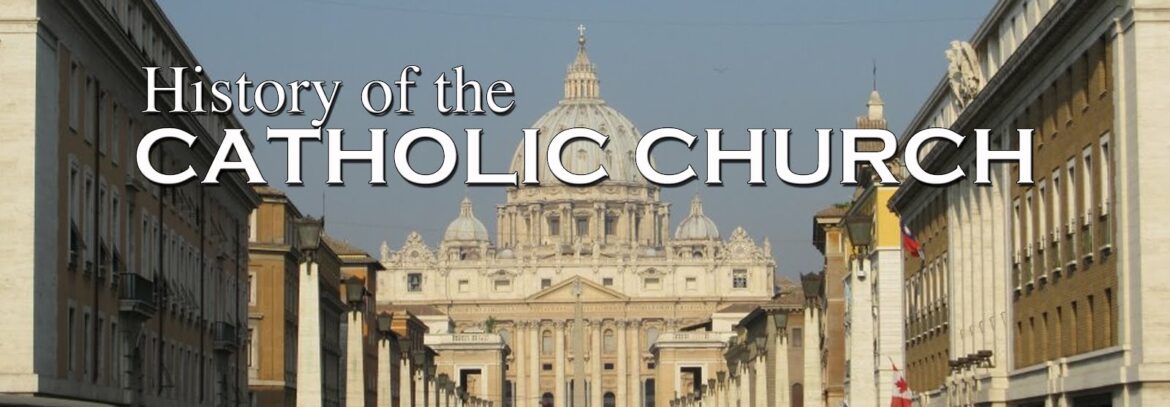When discussing the origins of the Catholic Church, one might be tempted to simply look for a specific year or event. However, the story is significantly more intricate and layered. The Catholic Church is not merely an institution founded on a particular date; it is a rich tapestry woven with theological, historical, and cultural threads that transcend a singular moment in time. The examination of its inception invites an understanding of the early Christian community, the role of apostolic succession, and the evolving nature of Christian doctrine throughout the centuries.
To begin with, the roots of the Catholic Church can be traced back to the ministry of Jesus Christ, around the first century in Judea. The pivotal event that marks the inception of the Church is often considered to be Pentecost, which occurred approximately fifty days after the Resurrection of Christ. According to Christian tradition, it was on this occasion that the Holy Spirit descended upon the apostles, empowering them to disseminate the teachings of Jesus. This moment is regarded as the birth of the Church, as it galvanized the apostles into action, leading them to spread the faith beyond Judea and into the wider Greco-Roman world.
The apostles, notably Peter, James, and John, became foundational figures in this early movement. Their frequent congregational gatherings and the establishment of communities of believers are historically significant. They performed baptisms, shared breaking of bread, and initiated early liturgical practices that are echoed in modern Catholic rituals. The establishment of Peter as the ‘rock’ upon which the Church would be built has profound implications, outlining the concept of apostolic succession that remains central to Catholic theology. This succession legitimizes the authority of the Church’s leadership, tracing an unbroken line back to the apostles themselves.
As the Church began to solidify its identity, it faced numerous challenges and external pressures. Persecutions under various Roman emperors, such as Nero and Diocletian, galvanized the faithful but also necessitated a clandestine practice of their beliefs. This underground existence fostered a unique resilience and adaptability, allowing early Christians to transcend persecution and cement their beliefs within communities.
By the early fourth century, the landscape of the Church began to change dramatically. The Edict of Milan in 313 AD, promulgated by Emperor Constantine, marked a transformative moment in Church history, granting religious tolerance and enabling the Catholic Church to emerge from clandestinity. This shift not only legitimized Christianity but also facilitated its spread across the Empire, leading to the establishment of churches and the organization of a more formal structure of leadership. It is also during this period that important ecumenical councils were convened, shaping orthodoxy and delineating heresy. The Council of Nicaea in 325 AD is a seminal event that produced the Nicene Creed—a foundational statement of Christian belief that remains crucial for Catholic doctrine.
The evolution of the Catholic Church continued through the Middle Ages, an era marked by significant theological development and world events that intertwined with the Church’s influence. The rise of monasticism played a crucial role in preserving knowledge, promoting education, and fostering community life amidst the social upheaval of the time. Figures like St. Benedict and St. Augustine of Hippo became pivotal in shaping Catholic theology and practice. The establishment of universities further propelled theological scholarship, and the Church became a principal institution through which knowledge and culture were cultivated.
However, along with growth came the challenges of power and corruption. The Western Schism of the late 14th century exemplified moments of internal strife that led to fragmentation and questions regarding the legitimacy of papal authority. This turbulent period laid the groundwork for the Protestant Reformation in the 16th century, which would fundamentally challenge the Church’s monopoly on Christianity, leading to the birth of various Protestant denominations.
The Catholic Church’s response to the Reformation was the Counter-Reformation, characterized by a confluence of spiritual renewal and ecclesiastical reform. The Council of Trent, convened between 1545 and 1563, reaffirmed Catholic doctrine and addressed abuses, reestablishing ecclesiastical authority while paving the way for new spiritual movements such as the Jesuits. This response was not merely reactive but rather proactive—seeking to reinvigorate the Church and respond to contemporary moral and theological challenges, thus reinforcing its relevance in an evolving world.
Today, the legacy of the Catholic Church is profound, extending far beyond religious practices. It is a bastion of art, education, and social justice. From cathedrals that adorn city skylines to hospitals and schools that embody the Church’s commitment to serving humanity, its influence permeates many facets of modern life. Countercultural movements that advocate for the marginalized resonate deeply with the Church’s teachings about dignity and worth. Additionally, the ecumenical dialogue initiated in the 20th century, particularly through the Second Vatican Council, reflects a concerted effort to bridge divides and promote mutual understanding among different Christian traditions.
To conclude, the question of when the Catholic Church was founded is not merely an inquiry into a specific date but a profound exploration of its origins, evolution, and enduring legacy. The interplay of historical events, theological developments, and cultural influences forms an ongoing narrative that invites both inquiry and reverence. Rather than reduce the Church to a series of milestones, one recognizes that it is a dynamic entity, constantly responding to the world while being rooted in the teachings of Christ. In this light, the fascination with the Catholic Church grows, stemming not only from its storied past but also from its present and future endeavors to engage with a world in need of hope, compassion, and truth.



